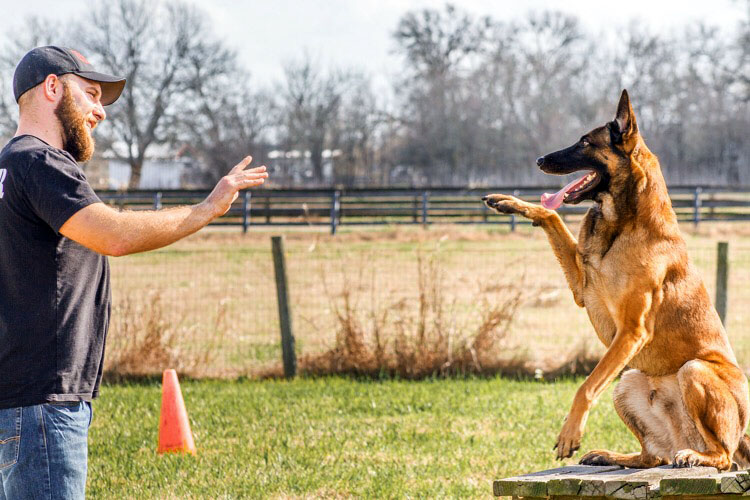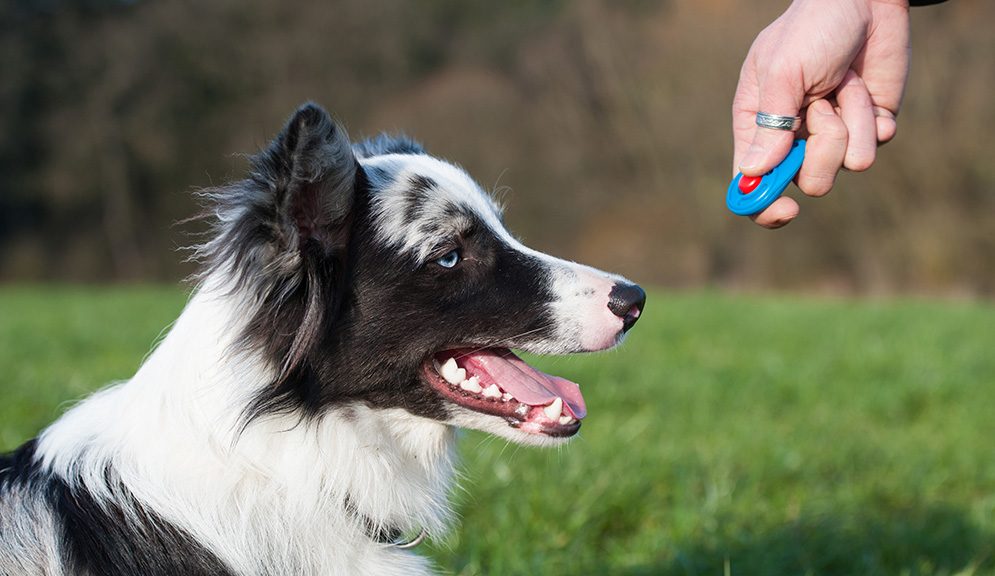Typical Behavioral Issues and Their Solutions in Dog Training
Typical Behavioral Issues and Their Solutions in Dog Training
Blog Article
Necessary Tips for Effective Dog Training: An Overview for Animal Owners
Efficient dog training is a diverse procedure that calls for a tactical technique customized to both the pet's personality and the proprietor's purposes. Comprehending exactly how to browse these barriers can significantly boost the training experience, inevitably transforming the connection between owner and canine.
Understanding Canine Habits
Comprehending pet habits is necessary for efficient training and cultivating a harmonious connection between dogs and their proprietors. Pets interact primarily through body movement, articulations, and activities, making it essential for owners to translate these signals accurately. Recognizing a pet dog's stance, tail position, and ear alignment can give insights right into its mood. For example, a wagging tail does not always indicate joy; it can additionally signal exhilaration or stress and anxiety.

Socialization plays a significant duty in canine habits; direct exposure to numerous atmospheres, people, and other animals can significantly influence a dog's personality. Moreover, factors such as type characteristics and private character must guide training methods, as some breeds might have specific behavioral characteristics that necessitate customized methods. By comprehending these components, owners can create a supportive setting that urges positive behavior, leading to successful training end results and a deeper bond with their pets.
Establishing Constant Commands
Effective interaction with your dog begins with developing constant commands. This fundamental aspect of training is important for fostering understanding in between you and your pet dog. Consistency in the commands you use makes certain that your dog can dependably link certain words or expressions with the wanted actions.
When selecting commands, choose clear, distinctive words that are very easy to differentiate and state from one another. Avoid utilizing similar-sounding commands that might confuse your pet dog. Using "rest" and "remain" is appropriate, yet "rest" and "hit" can lead to misunderstandings.
Furthermore, keep the exact same tone and volume for every command. Dogs are sensitive to singing hints, so varying your tone can produce complication.
It is just as crucial to make certain that all household members get on the very same web page pertaining to the commands used. A united front in command usage will certainly avoid mixed signals and strengthen the understanding procedure.
Positive Reinforcement Techniques
The power of favorable support in pet training depends on its ability to urge wanted habits via rewards and praise. This technique is grounded in the principle that behaviors complied with by favorable outcomes are more probable to be repeated. By including favorable support right into your training routine, you can properly form your canine's habits in a useful way.
To execute favorable reinforcement, it's necessary to identify what encourages your dog, whether it be deals with, playthings, or verbal appreciation. When your dog executes a desired activity, such as resting on command, instantly reward them with a treat or affection. This organization between the command and the favorable result reinforces their understanding.
It's important to timing the rewards correctly; providing the reinforcement within secs of the wanted habits helps your canine make the connection (dog training). In addition, uniformity is vital-- make certain that all household members use the same commands and reward systems to prevent confusion

Slowly, you can lower the regularity of deals with as your pet learns the actions, transitioning to praise or periodic rewards. This technique not just promotes a strong bond between you and your pet dog however also promotes a favorable discovering setting, making training a delightful experience for both.
Socialization and Interaction
Regularly revealing your pet to a range of atmospheres, people, and other animals is critical for their social growth. Socializing should start early, preferably throughout the crucial window of 3 to 14 weeks, when young puppies are most responsive to new experiences. Older canines can also benefit from recurring socializing initiatives.
Present your canine to different setups, such as parks, pet-friendly shops, and urban areas. This direct exposure helps them adapt to numerous stimuli, lowering stress and anxiety and fear responses. Encourage favorable communications with other dogs and individuals, making certain that these experiences are regulated and risk-free to foster self-confidence.
Make use of organized playdates with well-mannered pets, as this can boost your dog's social abilities and instruct them ideal actions. Obedience courses and training sessions additionally provide outstanding chances for socialization, permitting your pet to connect with others in a monitored atmosphere.
Monitor your canine's body movement throughout interactions, as this will certainly assist you gauge their convenience degree. Gradually boost exposure to even more tough circumstances while making sure that each experience is favorable. A well-socialized pet dog is more most likely to exhibit well balanced behavior, resource making them a joy to have in any type of setup.
Dealing With Usual Training Obstacles
Every pet owner will certainly run into training challenges eventually, no matter their pet's age or socializing level. Identifying usual concerns such as stubbornness, interruptions, and fearfulness can aid in developing reliable approaches for renovation.

Interruptions during training sessions can hinder focus. To fight this, start training in a silent atmosphere with minimal stimulations. Gradually introduce interruptions as the canine comes to be extra efficient in commands. Short, constant training sessions are additionally effective in preserving focus.
Fearfulness can prevent a pet's understanding process. Progressive desensitization to the resource of worry, coupled with positive reinforcement, can help relieve anxiety. Persistence is crucial; never ever compel a pet dog into a circumstance that creates distress, as this might exacerbate the issue.
Eventually, understanding and dealing with these usual obstacles with a structured strategy will foster an extra productive training experience, strengthening the bond between dog and proprietor while advertising reliable learning.
Final Thought
In recap, effective pet dog training counts on a thorough understanding of canine behavior, the establishment of regular commands, and the application of favorable support techniques. Socialization plays a vital duty in developing well-adjusted pet dogs, while resolving common training obstacles requires perseverance and versatility. By applying find out this here these crucial strategies, click here for more info animal owners can promote a strong bond with their pets and advertise preferable habits, inevitably bring about a harmonious relationship between people and their canine buddies.
Recognizing pet dog actions is vital for efficient training and promoting a harmonious connection in between canines and their owners.Socializing plays a substantial duty in canine behavior; direct exposure to different atmospheres, people, and various other pets can significantly affect a canine's personality.The power of positive reinforcement in pet training lies in its capability to encourage preferred actions via rewards and appreciation. By including positive support into your training routine, you can properly shape your canine's actions in a useful fashion.
In summary, successful pet training depends on an extensive understanding of canine behavior, the establishment of regular commands, and the application of favorable reinforcement techniques.
Report this page